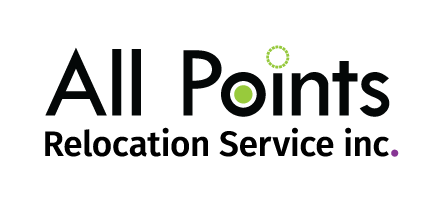In the race to automate everything, the relocation industry has seen a surge of AI-powered forecasting tools promising greater accuracy and efficiency. The big players in the relocation space tout these tools as the future—impressive dashboards, sleek interfaces, and bold claims of precision.
But here’s the reality: AI and technology aren’t quite there yet when it comes to forecasting relocation costs with the level of accuracy that companies need. And when a budget is off by $25,000 or more, there’s more than just frustration—there’s financial and operational chaos.
At All Points Relocation, we keep a close watch on emerging technology. We see promise in assignment costing—tools that can handle tax, gross-ups, and allowances with increasing sophistication. But when it comes to point-to-point relocations, AI still falls short in ways that could cost companies and transferees dearly.
The Biggest Flaws in AI Relocation Forecasting
1. It Can’t Replace a Human Interview
A relocation budget isn’t just numbers—it’s a reflection of a family’s real needs. AI tools often take a generic data set (e.g., a family of four moving from Vancouver to Calgary) and plug it into a forecasting model.
But without an actual conversation, these tools miss crucial variables:
- Will they rent or buy?
- Are they moving into a condo or a house?
- Do they have a large wine collection, an antique piano, or specialized crating needs?
- How many bedrooms do they have to pack and move?
- Will they require storage, extended temporary housing, or additional schooling support?
A 10-minute interview with the family will give us a far clearer picture than any AI tool—budgeting against their actual needs rather than just an algorithm’s best guess.
2. AI Ignores the Power of a Postal Code
One of the simplest yet most effective ways to refine relocation cost estimates is by using an employee’s specific postal code rather than just a broad city-to-city estimate.
For example:
- A home in Kitsilano, Vancouver, is not the same as a home in Surrey.
- A move from downtown Toronto will not cost the same as a move from Markham.
- The size of a move—number of bedrooms, square footage, high-rise elevator restrictions—varies wildly.
Yet many AI tools still rely on general city averages, which are too vague to be accurate. A specific postal code gives us far more insight into the likely sales price of the home, the size of the household goods shipment, and even the complexities of move logistics (e.g., high-rise condo moves require elevators and specialized handling).
3. AI Lacks Real-Time Market Intelligence
Relocation costs fluctuate. Housing prices, temporary accommodation rates, moving costs, and rental demand shift constantly based on market conditions.
Many AI tools rely on historical data, which becomes outdated quickly. A budgeting tool using last quarter’s rental prices in Halifax might drastically underestimate costs if demand has since surged.
At All Points Relocation, we track market trends in real time. Our data isn’t just historical—it’s backed by real-world transactions happening today.
4. A One-Size-Fits-All Approach Doesn’t Work
AI and tech solutions thrive in repeatable processes. But relocation isn’t one-size-fits-all.
Some companies might relocate engineers, who expect high-touch service and executive housing, while others relocate retail managers, who need budget-conscious solutions.
An AI tool might assume that all two-bedroom rentals in Calgary fit within a $2,000/month budget, but our team knows that:
- Some employees prioritize walkability and will pay more for a downtown rental.
- Others prefer suburban areas with easy access to schools and family amenities.
- Some need short-term furnished options, which come at a premium.
Only a real conversation (or at minimum, human-led research) can tailor estimates to an individual’s needs.
The Bottom Line: Clients Want Accuracy, Not Just Flashy Tech
When companies plan relocation budgets, they don’t want estimates—they want accuracy. An AI tool that’s $5,000 off might be tolerated, but $25,000 off? That’s a problem.
At All Points Relocation, our official stance is simple:
- AI is improving, and we’re watching it closely, but today, old school still wins.
- A human-driven approach, backed by real conversations, market intelligence, and precise location data, will always outperform a generic algorithm.
Yes, technology can enhance efficiency. But for now, when it comes to budget forecasting, human expertise remains irreplaceable.

